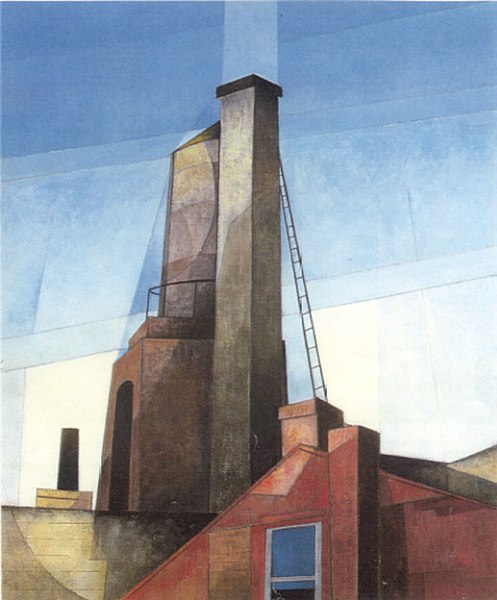Charles Sheeler was an American artist known for his Precisionist paintings, commercial photography, and the avant-garde film, Manhatta, which he made in collaboration with Paul Strand. Sheeler is recognized as one of the early adopters of modernism in American art.
Charles Sheeler standing next to a window. c. 1910.
Still Life (1925), one of Sheeler's earlier works, and one of several of his still life paintings
Connecticut Barns (1934), created by Sheeler for the Public Works of Art Project
The monument of Charles Sheeler (and Musya) in Sleepy Hollow Cemetery
Precisionism was a modernist art movement that emerged in the United States after World War I. Influenced by Cubism, Purism, and Futurism, Precisionist artists reduced subjects to their essential geometric shapes, eliminated detail, and often used planes of light to create a sense of crisp focus and suggest the sleekness and sheen of machine forms. At the height of its popularity during the 1920s and early 1930s, Precisionism celebrated the new American landscape of skyscrapers, bridges, and factories in a form that has also been called "Cubist-Realism." The term "Precisionism" was first coined in the mid-1920s, possibly by Museum of Modern Art director Alfred H. Barr although according to Amy Dempsey the term "Precisionism" was coined by Charles Sheeler. Painters working in this style were also known as the "Immaculates", which was the more commonly used term at the time. The stiffness of both art-historical labels suggests the difficulties contemporary critics had in attempting to characterize these artists.

Charles Demuth, Aucassin and Nicolette, oil on canvas, 1921
Charles Demuth, I Saw the Figure 5 in Gold, 1928, Metropolitan Museum of Art
Paul Strand, Wall Street, 1915
Morton Schamberg, Telephone, 1916, oil on canvas, Columbus Museum of Art.








